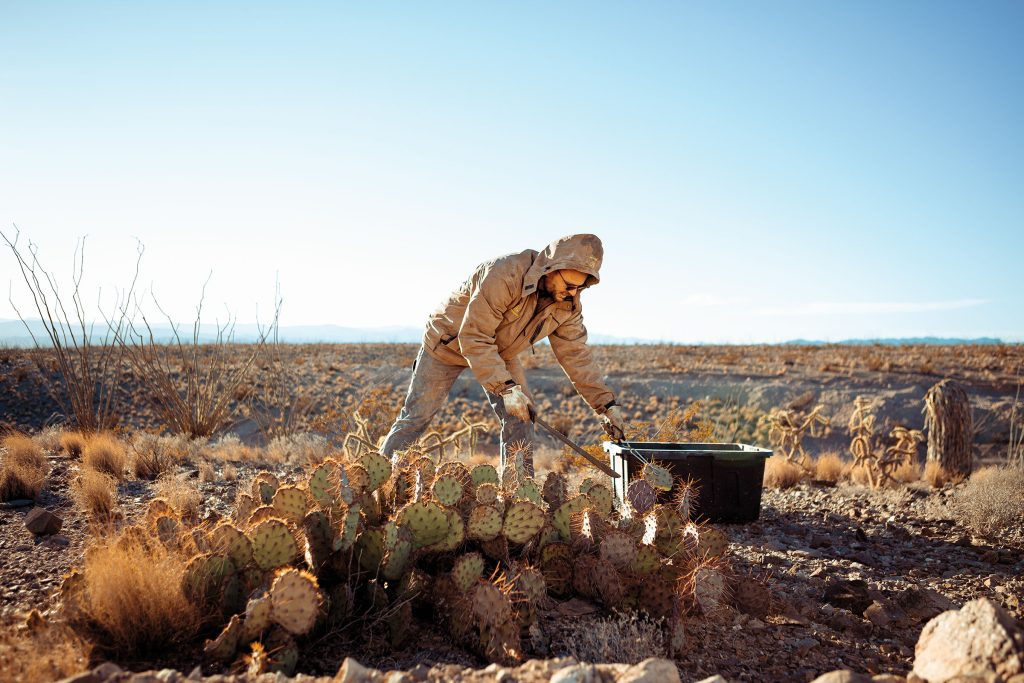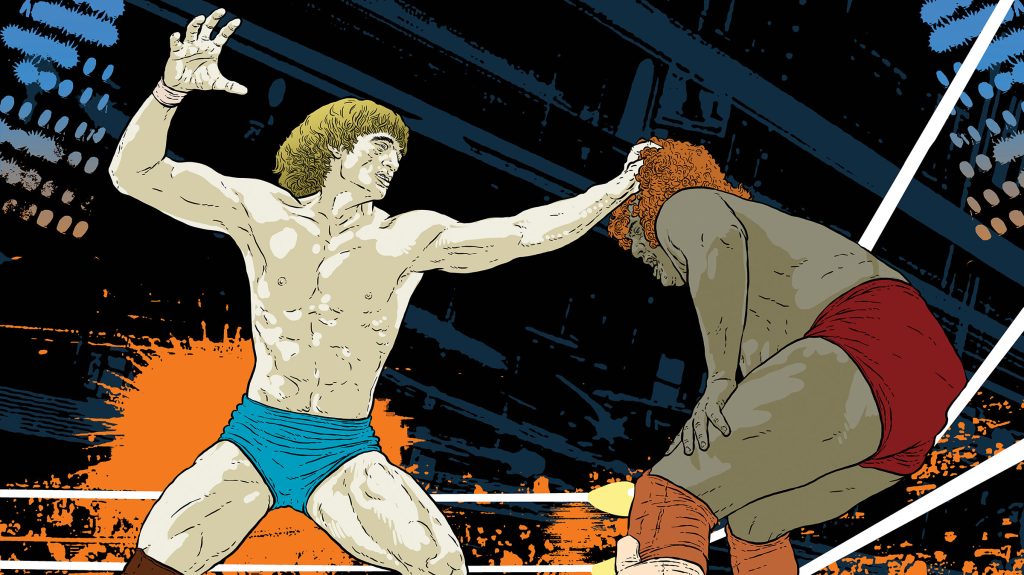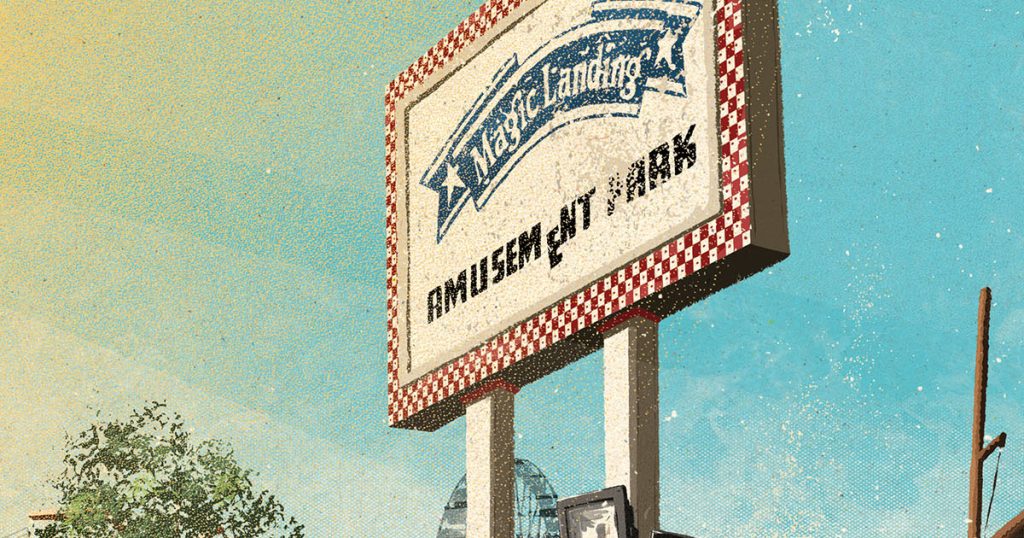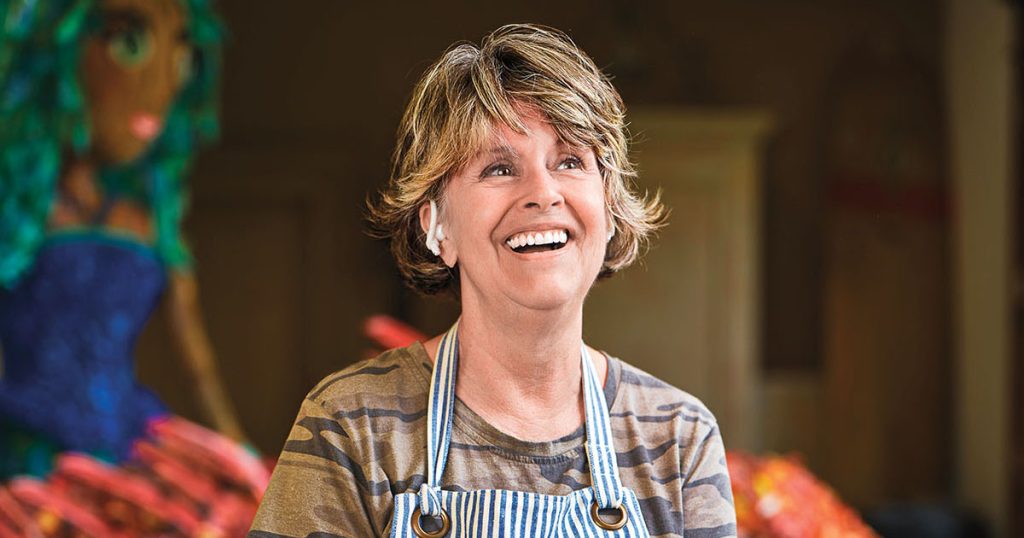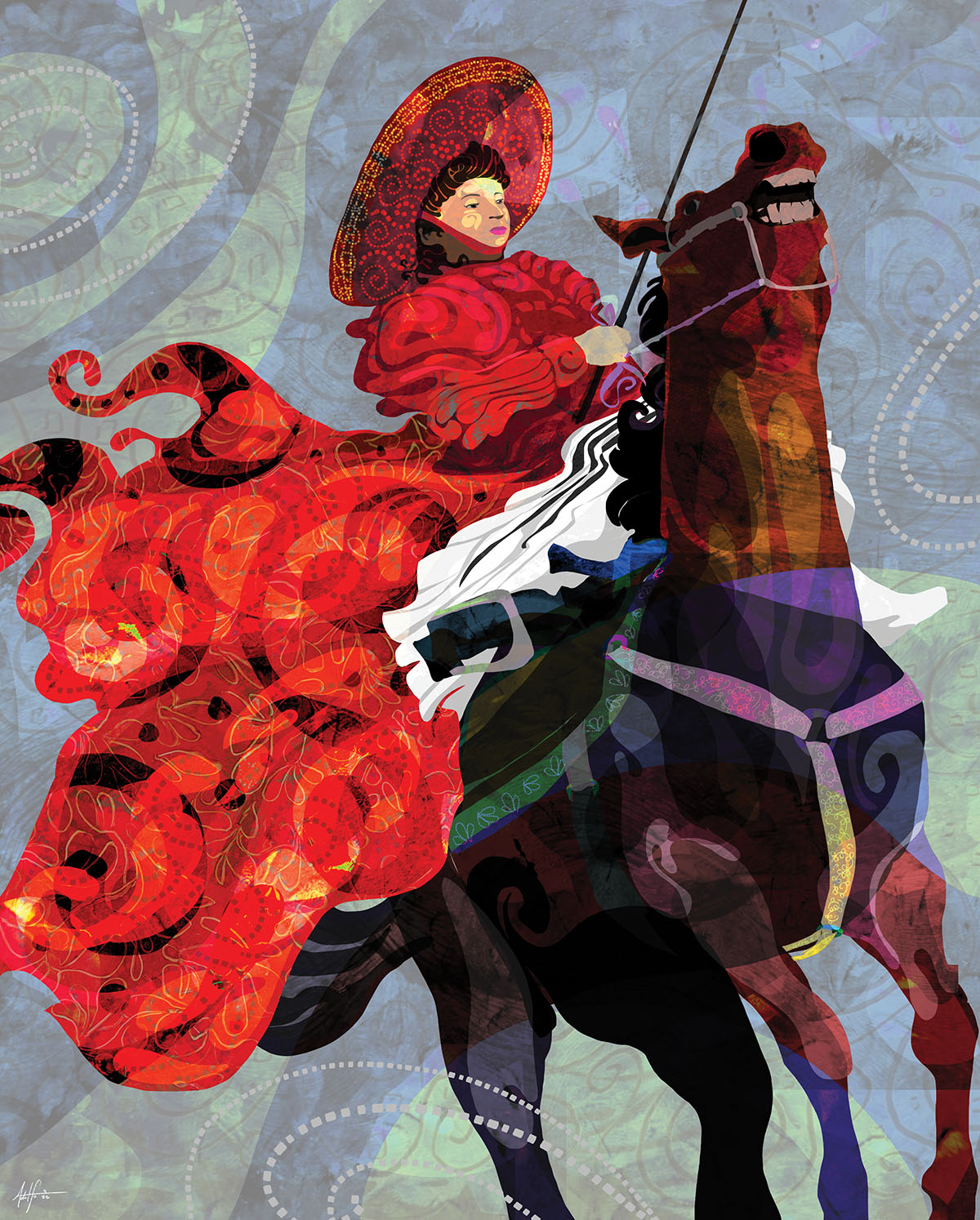
A Single Silver Spur
A daughter and father share a devotion to charreadas in Del Rio
There’s a photograph of my father and me from 1984, when I’m 8 years old. We’re at the Fiesta de Amistad, the annual weekendlong “feast of friendship” between the United States and Mexico. The event is Del Rio’s most popular celebration, commemorating the joint construction of the Amistad Dam by the U.S. and Mexico. It’s a big deal: Fiesta de Amistad starts on a Friday with an abrazo, or embrace, between the mayors of Del Rio and Ciudad Acuña, Mexico, and includes a craft fair and grand parade featuring Miss Del Rio and Señorita Amistad.
My father and I are in the parade, among 200 participants from both sides of the border. There are floats galore, flashy convertibles carrying local belles, whirling native matachine dancers, conjunto bands thumping out polkas and cumbias, high school marching bands, Shriners buzzing circles in their red minicars. Anyone and everyone who is part of a local club, civic organization, musical group, or school is in this parade.
We’re on horseback, riding with the Del Rio Charro Association at the tail end of the parade just after the American rodeo riders. Horse folks are always last in the parade because no one wants to promenade through piles of horse dung.
I ride beside my father. He is dashing in his formal charro suit, black with silver botonaduras—metal ornamentations embroidered into the sleeves and down the trousers from hip to ankle. My father’s botonaduras are beautiful: rows of horse heads facing each other, each pair connected by a thin chain. He wears a sombrero, a gun holstered at his hip. He rides Coronela, his sorrel mare quarter horse, who I love intensely but am not allowed to ride. She is powerful and spirited, too much horse for 8-year-old me. My mount is Paloma, small and white, a gentle creature content to keep pace at Coronela’s shoulder.
I wear a green cotton dress, estilo adelita, adorned with a white lace applique across the bodice and stitching along the collar and sleeve cuffs. My hair is in two braids, the ends tied with bright red ribbons. I wear a straw sombrero. I’m dressed as a pint-size escaramuza charra.
Some bits: Charrería is a Mexican equestrian sport akin to rodeo. Charros compete in charreadas. Escaramuzas are the female performers at charreadas. The name escaramuza, or “skirmish,” is derived from the mythos of the Mexican Revolution, when female soldiers, like Pancho Villa’s legendary compañera-at-arms, Adelita, rode into battle alongside the men. Escaramuza charra is simply the formal identifier: the skirmish, charro-style.
While charros compete in events called suertes, roughly analogous to American rodeo events, escaramuzas perform choreography more akin to a troupe of ballerinas. They appear in colorful dresses, frothy crinolines, starched white pantaloons, and under their sombreros, ribbons and flowers twisted in their hair. They ride sidesaddle, so each one wears a single silver spur. They are all precision and artistry and skilled horsewomanship.
In the photograph, I’m not an escaramuza. I’m just a kid pretending to ride sidesaddle, right leg hooked around the horn, artfully hidden by the long skirt of my dress. It’s an adult charro saddle, meant for a grown man. I’m too short to reach the stirrup, so I’ve thrust my left boot into the leg fender, just to hold on to something.
Probably, my mother has said this is not safe but been overruled by my father. It would have been his idea, me appearing with him, seated in this haphazard way.
You’ll be fine, I can almost remember him saying. I probably didn’t need convincing anyway. I’d been riding on the back of his Harley since the age of 5. If my daddy said I was safe, then I was.
In the photograph, my father stares straight ahead, unsmiling and aloof, his thick moustache the very height of charro swagger. Next to him, I’m doing my best imitation. Chin out, meeting the crowd with a fearless gaze. Trying to look, well, tough.
We represent Texas. We represent America.
I visited home last December, driving to Del Rio from College Station, where I live and where I teach young Aggie STEM majors about writing poetry and fiction. I had not been home in nearly two years. There’s a pandemic; most of my family has migrated to the Dallas area; and, without stops, it’s a six-hour drive.
By dusk, San Antonio was in my rearview. I felt the psychic relief of finally being on the road home—my road home—this specific 150-mile stretch of US 90, where the world abruptly shifts into miles and miles of sweeping brush country, mesquite trees, and cacti, hemmed by barbed wire fences. After sunset, the gentle swells of low hills are outlined against an expanse of starry horizon, and at the very edge, a dim aura of artificial light marks some small town in the distance.
This piece of highway dwells in my heart. When I lived outside of Texas during graduate school, I constantly dreamed of US 90, always at sunset, always the road ahead of me stretching toward an uninterrupted sky.
If I’m driving alone, it’s my habit to wave at Lienzo Charro 4 Palmas, the site of my childhood career in escaramuza. The ranch is off the highway just a few miles before arriving in Del Rio proper. It’s a terribly sentimental habit, but 4 Palmas was the scene of some of my happiest memories.
This time, though, I couldn’t spot 4 Palmas. New buildings had sprung up along the highway. There was too much light pollution. I couldn’t see the roofed grandstand jutting into the night sky.
The first charro associations in the U.S. sprung up in Texas and California just after World War II and proliferated during the 1970s in the full flower of the Chicano movement. Mexican Americans were defining their own identity, reclaiming pride in their culture. As mestizos, we draw from the colonized and the colonizer. The Flag of Aztlán, a symbol of political action, connected Mexican Americans to the Indigenous “histomythology” of the mighty Aztec civilization. The surge of interest in charrería was simply another manifestation of Chicano pride, this time in an iconic archetype with Spanish roots. A charro can rope and ride with the best of them, but with his gorgeous attire and military code, he’s more than a cowboy; he’s almost a knight.
My father graduated high school in 1970. He grew up during the height of Chicano consciousness. It doesn’t surprise me that, years later, he’d choose charrería over rodeo. He was proud of his heritage.
My father didn’t grow up around horses though. He’d spent his childhood working: summers on Wisconsin farms, night shifts at the Coca-Cola Bottling Company. My grandfather had died young, so my father constantly had a job to help keep the family afloat.
Whatever repressed energies he’d possessed as a laboring child came roaring out of the adult. He was a law unto himself, undoubtedly responsible for every white hair on my mother’s head. He was a dreamer, a man of energy and many enthusiasms. He loved new records and new Wranglers. He had a Harley and a horse. When I was 6 years old, he dove headfirst into the charro scene, a barrio kid set on rebranding himself as a horseman.
In the mid-1980s, he was a family man with firm ideas. His children would not join the labor force until they were 18. They would play sports and participate in scouts, learn piano, act in school plays, and after all that, attend college. There was soccer and Little League baseball for my brother. For me, there was riding.
I shared my father’s devotion to horses. He taught me how to care for our horses, pick out their hooves, brush and bathe them, as well as the importance of cooldown walks after exercise. How to talk to them, how to be confident in the saddle. Horses were our thing, just his and mine. He was enthusiastic, proud of my abilities. I basked in the light of his love.
I was fast becoming a competent rider. Only, as a female, there wasn’t anything for me to do other than barrel racing, which he nixed. He was a charro. He wanted me to participate with him. The Del Rio escaramuza team came into existence because my father wanted me to share his heritage and be proud of it. He dreamed up the escaramuza team and made it real for me, for my teammates. He wanted us to have our own space.
In later years, after he found his faith, my father channeled his creativity and energy into his church parish, mentoring scores of teenagers through youth programs and volunteering at men’s retreats. He helped establish the local chapter of Knights on Bikes, for motorcycle-loving Catholic men such as himself.
So, it is not hard for me to imagine my father convincing the Del Rio Charro Association to start an escaramuza team. There were other charro teams around small-town southwest Texas, but no one else had a girl’s group. It was a thing seen in cities, with larger, more established organizations—Laredo, El Paso, San Antonio. An escaramuza team would set Del Rio apart. It wouldn’t be hard either; all they needed was a half-dozen girls.
By 1986, my father had managed to gather enough girls for a fledgling team, all high school juniors and seniors. My cousin Raquel and her best friend, Erika, attracted by the novelty of learning to ride and the promise that someone would loan them horses. Beautiful, green-eyed Pati, an experienced rider and our team’s Charro Queen. Judy and Sophia, whose fathers were charros too. And me, a fourth grader, the baby of the team. I’m sure they thought I was a pest most of the time, but I idolized those girls, especially Erika and Pati.
Our team purchased all our gear and regalia across the border. Team moms, in charge of costumes, chose the ribbons and material and took us for fittings: made-to-order crinolines, pantaloons, and full-skirted dresses. Meanwhile, the dads bought our gear from El Caballo Blanco, the leather goods store in downtown Ciudad Acuña. Sombreros, white calf-high boots, silver spurs, riding crops, and the albarda charra, the escaramuza sidesaddle. The equipment had to be special ordered from Guadalajara, Jalisco.
We even had jackets—red satin sports jackets with “escaramuza” stitched in fancy letters across the back. Never mind that even the adult small was absurdly big for 10-year-old me. I flapped around my elementary playground in it every day. I wanted everyone to know I was cool, part of a teenage club, just like the Pink Ladies in Grease. Kids would scrunch up their faces to spit out that word—escaramuza. What is that? I’d just smile, tell them it was too hard to explain. Oh, I was lofty. My team and I were special. Nobody else was doing what we were doing. The six of us were the only escaramuzas in town.
Tooling around Del Rio last winter, I found a veneer of homey sameness. The courtyard of the Whitehead Memorial Museum—home to a replica of Judge Roy Bean’s saloon and court, the Jersey Lilly—was transformed into Santa’s North Pole. The Val Verde Winery, the oldest continuously running winery in Texas, was doing a brisk trade. The parking lot at Del Rio Feed & Supply was packed.
I decided to hunt for the entrance to 4 Palmas. In daylight, the roof of the grandstand appeared in the distance, rising above the tops of mesquite trees. When I was little, a trip out to the lienzo, the charro arena, meant leaving the city limits. Now, there were new commercial buildings all the way out to 4 Palmas. The road to the ranch entrance was easy to miss too, tucked between a U-Haul rental shop and a convenience store.
As I crossed the cattle guard on the way in, I realized this was the first time I’d ever driven myself there. All the other times I was a child listening to corridos in my father’s 1978 Ford F-150 Supercab, known in our family as “the Big Ranchera.” My love of music is another thing I share with my father. Those years when I was an escaramuza, the drives out to 4 Palmas cemented my lifelong love of Mariachi Vargas de Tecalitlán, Vicente Fernández, and, most of all, Antonio Aguilar, master of the Mexican folk story-song, the corrido.
My favorites were Aguilar’s corridos de caballos. A horse-crazy preteen, every song enthralled me. These were stories about the Mexican Revolution, the famous steeds of charros and soldiers, songs full of poetry, bright brass horn, harp, and romanticism. They were tales of Seven Leagues (Siete Leguas), Pancho Villa’s faithful steed, rearing at the sound of the train whistle; Golden Nugget’s daring escape from Huertistas; Jet Black charging a firing squad to save his rider. Every horse so brave and tragic and true. I’d sing along, a catch in my throat.
At 4 Palmas, I’d brush down Coronela. I was regularly performing with my team and finally good enough to ride her. I’d take her through sets of figure eights, warm her up before practice started, and imagine us being soldaderas together, picture her saving my life a thousand ways. I knew she was just as brave as any famous war horse.
Our coach was Chepe, tall and thin, a stern gaze under a beat-up cowboy hat. He demanded we practice four nights a week. Half the team needed to learn to ride, period. All of us needed to learn the sidesaddle.
An albarda charra doesn’t hold you the way a charro saddle does. You sort of sit into a man’s saddle, the cantle lightly supporting your back, both feet secured in stirrups. The albarda seat is high, boxy, and small, more like a perch. Instead of a saddle horn, there are three curved prongs. The first two make a U-shaped cradle on top, for your right leg. The other prong juts sideways, to the left of the “U.” It curves downward to support your left knee. It took some getting used to, but soon I felt weird not riding sidesaddle.
After that, it was the painstaking process of tackling each maneuver. Chepe watching and correcting, stopping us, telling us to start again. Easy moves, like riding in synced, evenly spaced pairs. Giros and cruces, spirals and crosses. Intricate moves like el abanico, the fan. For that one, we’d gallop around the arena in a staggered line, a horse’s head next to the shoulder of the horse ahead of it, all of us inches from each other, riding at different speeds to keep the line even. We’d swoop around the arena twice, and then the last girl would race to the head of the line, each girl in turn, until we were back to the original order. Round and round we went, Chepe calling, “¡Recógelo! ¡Ir allí! ¡Vamos!” Pick it up! Get there! Come on!
Practice, practice, practice, until the routine was muscle memory. I knew it by heart. My horse knew it by heart. I knew my teammates’ moves, their horses’ moves. My teammates knew mine.
After practice, the horses lathered and exhausted, the saddle cinch, the blanket, and my jeans darkened with sweat and sticky horsehair, and all of us covered in dust, we prepped our horses for the evening.
I’d walk Coronela for a cooldown all around the ranch. It’d be fully dark out. The sky would be crammed with stars and the hard-packed ground would take on a ghostly pale quality, so that Coronela’s dark, warm shape stood out clearly beside me. I’d hear the other girls in the distance, sometimes in pairs talking and laughing, or walking their horse with a teenage charro who’d waited through our practice for her. Soon, we’d reconvene at the stables and feed our horses together before heading home. Everything about it felt right.
Once a month or so, we’d perform in Eagle Pass or San Angelo, Odessa, maybe as far as Dallas, usually for a crowd big enough to fill the stands. We’d open the show with la punta, a maneuver where we’d charge into the arena one at a time, thrilling the crowd by skidding to a stop in the middle amid sprays of dirt and flying skirts. We’d salute them, riding crop against the brim of the sombrero. Then we’d canter to our places to begin the performance.
Eventually, teammates graduated and went to college or left Del Rio, causing the group to disband. I joined the Ciudad Acuña escaramuza team and performed for another few years. It was a good team, but as the only American girl, I was an outsider. Then I was in high school and an apathetic Gen Xer, unwilling to cross the border several times a week to ride with girls I didn’t much like. I loved the sport, but I couldn’t do it without my friends.
My father tried to argue. But you’re good. You’re so good. He was puffed with pride at my skill in the arena. By then, I was at least as good a rider as him. I was resolute though. I was done being an escaramuza.
Lienzo Charro 4 Palmas has changed. The adobe walls of the arena have been painted a garish red. The pavilion, formerly for dances, has been enclosed. It looks more like a clubhouse. A water main near the tack rooms has been dug up, likely for repair.
The stables were still the same. The scattering of trucks, men in cowboy hats feeding and bathing horses. The small details of equine upkeep were pleasant. Still, I didn’t stop. I drove around the ranch once, then left. Nothing felt the way I remembered it.
Later that night, I messaged Erika and Pati on Facebook. I had sorted through photographs of our performances, sent a few. “That was the best time of my life,” Erika said. “Look at this one! Look at us.”
The photograph is dramatic. We are performing el abanico, captured close-up as we enter the camera’s frame. A line of horses in full gallop, manes flying, nostrils flared. Erika leads the column. The skirt of her dress, her crinoline, both completely swept back, a pantalooned leg curled across the saddle. Her face is focused, almost serene. Behind her Judy is smiling and saluting. Everyone else is a crush of sombreros and flying red dresses.
Except me. I am at the end of the fan, scowling slightly, my gaze zeroed in on the place I need to be, right in front of Erika. I’m about to dash past a line of galloping horses, take the head of the column. That is, sure enough, my game face.
My father created an escaramuza team with his imagination, his energy, his will. He made that space for us. Those years were a singular experience, an incredible, unforgettable gift for the girls, for me.
I don’t know if it was the best time in my life. But in this photo, we are fearless; we are powerful; we are gorgeous warrior women in full charge. And I think, my God, weren’t we something? Weren’t we just?
